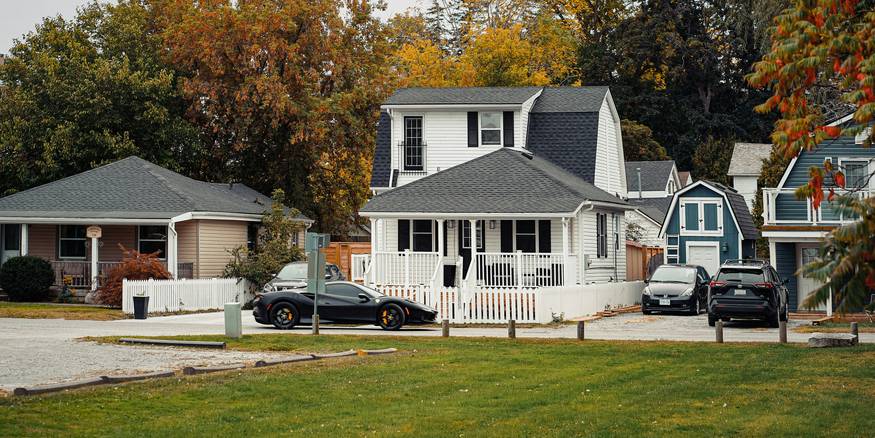Program Basics
The **Section 8 Housing Choice Voucher** (HCV) program helps more than 60 000 low-income Michigan households afford safe, decent rentals in the private market. HCV is tenant-based—**the subsidy follows you**, not the unit—unlike **Project-Based Vouchers** tied to specific apartments.
Funding flows from HUD → Michigan State Housing Development Authority (MSHDA) or one of 50+ local public housing authorities (PHAs) → landlord. You pay an income-based rent share; the PHA sends a **Housing Assistance Payment (HAP)** for the balance.
Visual snapshot:
- You. Apply, qualify, search, comply.
- PHA. Screens eligibility, issues voucher, inspects unit, pays HAP.
- HUD. Funds PHA, sets national rules.
- Landlord. Screens tenants, maintains unit, signs HAP contract.
Throughout this guide you'll see links to deeper resources such as affordable-housing and fair-housing protections.
Eligibility Criteria
To qualify for **Michigan Section 8** you must meet four pillars:
1. Family Definition
HUD defines “family” broadly: singles, couples, seniors, people with disabilities, or related/unrelated household members living together. Households with children under 6 poisoned by lead get priority.
2. Citizenship / Immigration
At least one household member must be a U.S. citizen or have eligible immigration status. Mixed-status families receive prorated subsidy.
3. Background Screening
- No lifetime Sex-Offender registration.
- No meth manufacturing on federal property.
- Drug or violent-crime evictions require 3–5 years “look-back.”
4. **Preference Point System**
MSHDA assigns extra points for **homelessness, veterans, disabled, or VAWA** survivors. Document early; preferences can shave years off the wait.
Income & Asset Limits
Voucher households must earn ≤50 % of Area Median Income (AMI) when first admitted—though 75 % of admissions must be “extremely low-income” (≤30 % AMI). After entry you can stay unless income rises above 120 % AMI.
**Adjusted income** lowers your countable figure through deductions:
- $480 per dependent
- Child-care expenses enabling work/school
- Disability-related expenses exceeding 3 % of gross income
- $400 elderly/disabled household deduction
Under-Reported Assets That Trip Applicants
- Uncashed paychecks or gig-app balances
- Cryptocurrency wallets (Coinbase, Ledger)
- Cash-value life insurance
- Venmo or CashApp balances over $100
Application Process
Michigan PHAs open wait-lists intermittently—sometimes for 48 hours. Follow them on social media or sign up for email alerts. When a list opens, follow these steps:
- Create an AssistanceCheck.com account. This portal tracks your status statewide.
- Submit the pre-application. Includes household size, income, Social Security numbers.
- Save your confirmation code. Screenshot or print—no code, no proof.
- Upload documents. State IDs, birth certificates, Social Security cards, proof of preferences.
Waiting List Tips
Michigan’s **Section 8 waiting list** routinely stretches 2–6 years, but smart moves help:
- Preferences: Verify veteran, homeless, or disability status to gain ranking.
- Keep contact info current. AssistanceCheck lets you update phone/email—missed letters = removal.
- Know status codes. “IWL” (Inactive Wait List) means you’re in the lottery pool; “Pending” means under review.
Estimated Wait-Times by County
| County | Average Wait | With Preferences |
|---|---|---|
| Wayne (Detroit) | 4–6 years | 1–2 years |
| Ingham (Lansing) | 3–4 years | 1–1.5 years |
| Kent (Grand Rapids) | 2–3 years | 8–18 months |
While waiting, explore other rental-assistance programs and keep saving for move-in costs.
Voucher Math Example
This real-world calculation shows how **payment standards** and **utility allowances** turn into tenant and PHA shares.
- Household: 4 people, adjusted income $36 000 / yr → $3 000 / mo.
- Tenant Payment (TTP): 30 % of monthly adjusted income = $900.
- Detroit 2025 payment standard: 3-bedroom = **$2 100**.
- Unit rent: $1 800 + $175 utility allowance = **$1 975 gross rent**.
- PHA pays: $1 975 – $900 = **$1 075 HAP**.
- Tenant pays landlord: **$725 rent** + pays own utilities ≈ $175.
Takeaway: Every $100 rent increase bumps tenant share by ≤$30 until it exceeds 40 % of income at move-in.
Finding a Unit
Once your voucher arrives, the clock starts—usually 60 days (extendable). Boost success odds with these strategies:
- Use housing-search engines with “voucher accepted” filters.
- Email **small landlords**; corporate complexes often cap voucher slots.
- Send a one-page “voucher résumé” summarizing income, references, and inspection benefits.
- Negotiate repairs before submitting the **Request for Tenancy Approval (RFTA)** to avoid HQS failures.
Remember, refusing a voucher can violate fair-housing laws—see our discrimination guide.
HQS Inspections
Before lease-up—and annually thereafter—the unit must pass **Housing Quality Standards (HQS)**. Inspectors check 13 categories from smoke alarms to lead paint.
Top Fail Points
- Missing GFCI outlets near water
- Peeling paint in pre-1978 homes
- Inoperable windows or locks
- Leaking plumbing under sinks
- Absent or expired smoke/CO detectors
Landlords get two re-inspection chances; if they miss the deadline, HAP abates. Tenants should complete a DIY checklist (downloadable on our upcoming HQS-tool page) to dodge delays.
Tenant Obligations
Keeping your *Section 8 voucher* means following the **Family Obligations** clause:
- Report income or household changes within **10 days**.
- Attend annual and interim recertifications.
- Pay rent on time and maintain the unit.
- Give proper notice before moving—see our move-out notice scheduler.
- Avoid fraud—intentional misstatements can trigger repayment + criminal charges.
Frequently Asked Questions
Ready for the next step? Explore additional options on our affordable-housing page.
